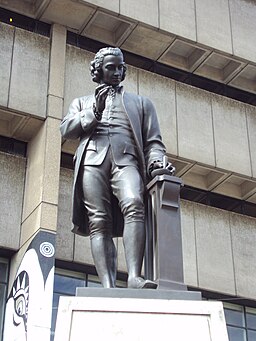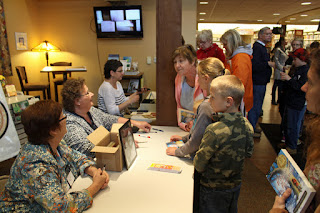Depending on where you live in Pennsylvania (if you live in Pennsylvania), you may have trick-or-treaters at your door tonight or tomorrow. Or maybe they were on your doorstep last night and you're already elbow deep in the leftover candy (why is it soooo hard to get the quantities right?). This week's post features some items that came across my screen in the past couple of weeks. None of them is directly related to a specific Trails of History site, so I haven't quite known how to share them here. But it occurred to me that they should still be of interest to Trailheads readers, most of whom I assume to be, like me,
I have a handful of Facebook friends who are heavily into the textile arts (knitting and quilting, in particular), so I've seen several references to London's Victoria & Albert Museum and a collection of 1940s knitting patterns they recently posted on their website. With PHMC plans beginning to form for 100th-anniversary and 75th-anniversary commemorations of U.S. entry into WWI and WWII, it made me wonder if anyone out there knows of similar patterns produced for American knitters (if you do, please leave a note in the comments). The British versions include the usual mix of sweaters and hats, but there are also specialized pieces adapted for men and women in uniform.
 |
| Knitted balaclava, WWII-era |
On a related note, Yale University has recently organized and made available a collection of 170,000 photographs created between 1935 and 1945 by the U.S. Farm Security Administration and Office of War Information (FSA-OWI). The photos are housed at the Library of Congress, but Yale's "Photogrammar" project is making them more searchable (and is in process of linking photos by photographer, location, date, etc.). There are quite a few photos for Pennsylvania, including many showing homefront activities (such as scrap drives) and farming in Lancaster County before and during WWII. If you visit the Photogrammer website, I suggest you set aside some time, because you may be there awhile. UPDATE 11/6/15: It has been brought to my attention that there are some glitches with the Pennsylvania images where the county info is incorrect (for example, images from Bryn Mawr, Delaware County, are marked as being from Washington County and some images from Washington County are included with Cumberland County. So just be aware and double check if you're using these for anything other than entertainment. On the other hand, while looking at the Cumberland County photos, I found one from the U.S. Army medical field school in 1943 with a man wearing a knitted scarf, so that connected the dots of this post very nicely.
A recent link in my newsfeed (but I can't remember who shared it), led to the website of the U.S. Geological Survey (USGS), which has been making topographical maps available for free download. They just finished a 2nd cycle of maps in September and most of the 50 states have at least some maps available (Alaska is in process). But this might be just the thing for the map lover in your life (or for yourself, of course).
Finally, there was a news item last week that should warm the heart of just about anyone involved with museums, whether you work at a museum or like to visit them (or both). NPR reported on a study by psychologists at Univ. of Oklahoma and Yale Univ. that compared how children and adults responded to different types of stories. At the risk of greatly oversimplifying the findings (you can read a fuller summary on NPR's website), researchers found that children in the study showed a greater preference for stories that were "real" and "factual" than for those that were "make-believe" or "fantasy," and adults showed some preferences for the latter. They theorized that there is a perceived difference between stories young children hear from older children or adults ("experts") and those they tell themselves or each other (in make-believe or play settings). Stories from experts help them learn new things about their world while stories with themselves or peers are about processing what they already know. I think this reinforces what lots of history museum folks know, which is that even young children respond enthusiastically to learning about the past and experiencing real places. In my unscientific opinion, I think it means we should be aware of the authenticity of programs and interpretation for children as well as adults and maybe look for opportunities to let adults engage in some make-believe. Hmmm, like dressing up for Halloween?













